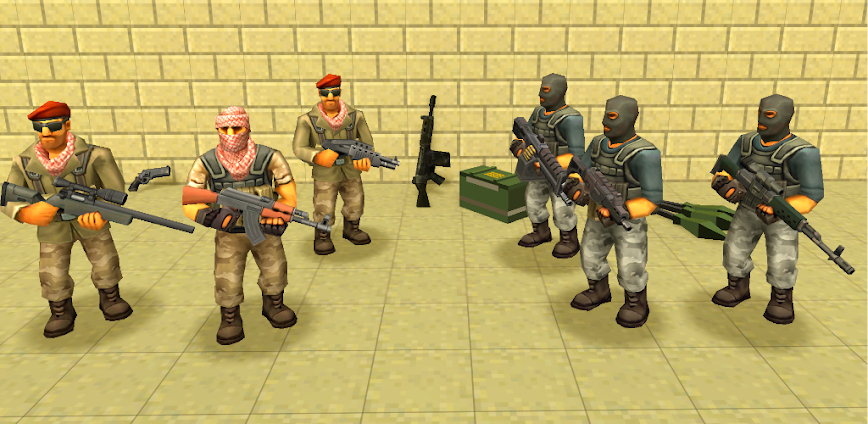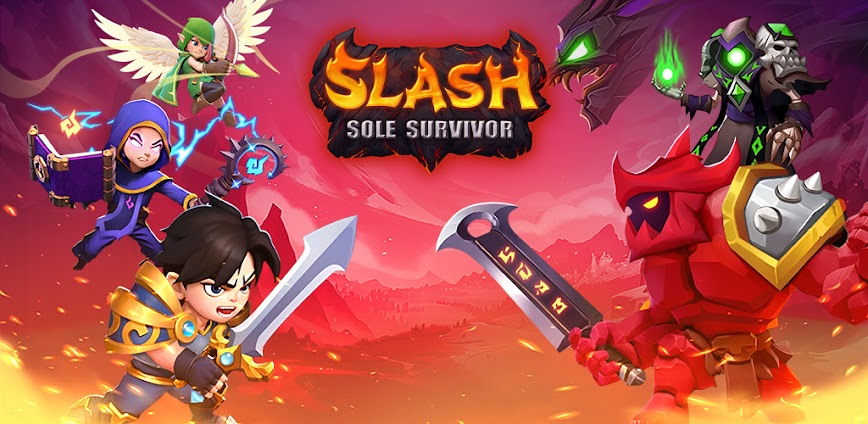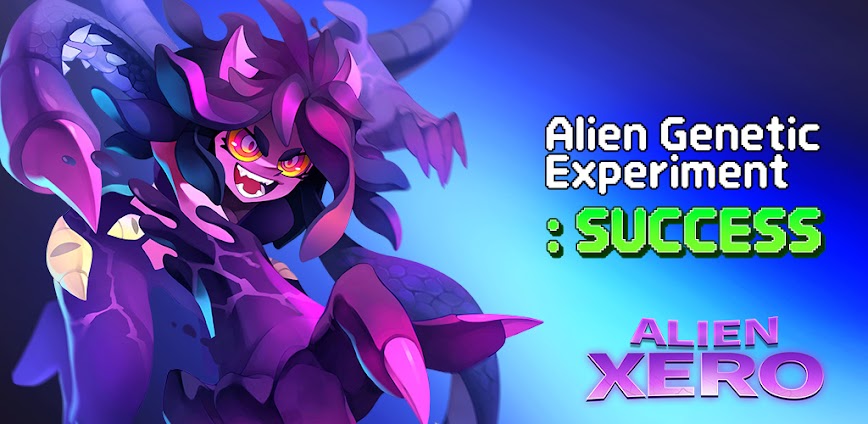Riot Escape Mod Apk v.0.8.11 (Kill Everyone)
- App Name Riot Escape
- Version 0.8.11
- Sizes 67M
- Requirements Android 7.0
- Developer Yso Corp
- Genre Action
- Updated Nov 07, 2025
- Platform GooglePlay
The digital entertainment landscape is perpetually evolving, constantly pushing boundaries and redefining how players interact with virtual worlds. Among the most compelling trends gaining significant traction is the rise of asymmetrical multiplayer games, where distinct factions with unique objectives and abilities clash in dynamic environments. This genre thrives on strategic depth, real-time decision-making, and the thrill of outmaneuvering an opponent with a fundamentally different toolkit. Titles like Riot Escape exemplify this exciting shift, immersing players in high-stakes scenarios that resonate with the universal appeal of conflict and resolution. These games offer more than just competitive play; they provide a nuanced exploration of tactics, teamwork, and individual skill, making them highly relevant in a gaming ecosystem increasingly favoring diverse and engaging online experiences for a global audience.
Embracing the Dichotomy: The Core Gameplay of Asymmetrical Conflict
At the heart of many modern online multiplayer experiences, particularly in the realm of action strategy, lies the captivating concept of asymmetrical gameplay. In games such as Riot Escape, players are presented with a fundamental choice that profoundly shapes their experience: to embody the role of a ‘rioter’ or that of law enforcement personnel. This decision is not merely cosmetic; it dictates the player’s abilities, objectives, and the very philosophy of their engagement within the game world. The strategic depth introduced by these contrasting roles is a primary driver of the genre’s popularity, offering varied challenges and replayability.
- Dual Role Gameplay: The design ethos often mandates that each participant actively steps into one of these two distinct roles within the game’s framework. This foundational split ensures that every match is a vibrant tapestry of conflicting strategies. As a rioter, the focus might be on rapid movement, evasion, and disrupting the environment, requiring keen spatial awareness and timing. Conversely, playing as police demands tactical precision, area denial, and effective containment strategies. Mastering either role requires a significant investment in understanding its unique mechanics, fostering a dedicated player base that appreciates the specialized skills each side demands. This dual perspective is crucial for understanding the comprehensive appeal of a complex online multiplayer combat title.
- Unique Objectives: The inherent balance in asymmetrical games stems from the opposing objectives assigned to each faction. Rioters are typically tasked with achieving specific disruptive goals, such as destroying targets, escaping designated zones, or holding key points for a duration, often relying on their superior speed and agility. In stark contrast, police units are geared towards preventing these actions, focusing on apprehension, control, and defense of critical assets. This direct counterplay ensures a dynamic push-and-pull, where understanding the opponent’s ultimate goal is as vital as pursuing one’s own. For example, a rioter’s swift ingress might be met with a police blockade, turning a simple path into a complex tactical puzzle.
- Switch Roles Anytime: A remarkable feature enhancing the player experience in Riot Escape and similar titles is the flexibility to transition between roles. This capability allows players to gain a comprehensive understanding of both sides of the conflict, an invaluable asset for strategic mastery. By experiencing the game from the perspective of both the pursued and the pursuer, players develop a more holistic view of map layouts, common tactics, and power-up locations. This deepens their strategic insight, enabling them to anticipate opponent movements and exploit weaknesses more effectively. It transforms the learning curve into a continuous discovery process, ensuring that even seasoned players find new nuances in every engagement. This encourages players to explore different playstyles, leading to a richer and more engaging action strategy game experience.
Dynamic Environments and High-Octane Engagement
The allure of a title like Riot Escape extends beyond its foundational asymmetrical roles into the very fabric of its interactive world. The game environment itself is not merely a backdrop but an active participant, presenting an ever-evolving array of challenges that demand quick thinking and precise execution. This focus on dynamic interaction ensures that gameplay remains consistently exhilarating, pushing players to their limits in a fast-paced urban conflict simulation. The emphasis on movement, spatial awareness, and exploiting environmental features is paramount for both survival and success.
- Parkour & Obstacles: Core to the high-octane action is a fluid movement system that often incorporates sophisticated parkour mechanics. Players are frequently required to navigate a complex urban landscape filled with various obstacles, from scalable walls and railings to strategically placed barricades and environmental hazards. Precise reflexes are essential, enabling characters to seamlessly run, climb, vault, and dodge through the environment with remarkable agility. This isn’t just for show; it’s a critical tactical element. Rioters might use parkour to evade capture or create unexpected flanks, while police could leverage environmental high-ground for better sightlines or to cut off escape routes. The mastery of these movement skills determines who controls the flow of engagement within this intense police vs. rioters game.
- Unlock Power-ups: To further intensify the dynamic conflict, both factions in Riot Escape can discover and utilize a variety of power-ups scattered throughout the map. These temporary enhancements or strategic items can dramatically shift the momentum of a match. For rioters, a power-up might grant a brief burst of super speed, allowing them to escape a tight spot or reach an objective swiftly. For police, it could be a deployable shield to create temporary cover or a stun device to incapacitate targets. The strategic acquisition and deployment of these power-ups introduce a layer of real-time decision-making, where the timing of their use can be the difference between victory and defeat. Some power-ups are designed to create ‘safe distances,’ while others are explicitly designed to frustrate or impede the opposition, adding an unpredictable element to every encounter.
- Strategic Pursuit: The gameplay loop masterfully combines elements of pure action with deep strategy and tactical power. Players are not merely running and gunning; they are constantly analyzing, adapting, and predicting. Over time, experienced players begin to discern the movement patterns and behavioral tendencies of their opponents, transforming raw action into a calculated chess match. Rioters learn optimal escape routes and distraction tactics, while police refine their pursuit algorithms, identifying choke points and anticipating evasion maneuvers. This cerebral layer of the game encourages continuous learning and adaptation, ensuring that no two matches play out exactly the same. The interplay of individual skill, strategic foresight, and the judicious use of acquired abilities creates a truly immersive and endlessly engaging asymmetrical multiplayer game.
Deep Mechanics and Player Progression: The Enduring Appeal
Beyond the immediate thrill of conflict and dynamic movement, games like Riot Escape build a compelling ecosystem through robust underlying mechanics and engaging player progression systems. These elements are crucial for long-term player retention and community building, transforming a series of skirmishes into a persistent journey of skill development and customization. Understanding how players evolve within the game world, unlock new capabilities, and strategize their approach contributes significantly to the title’s enduring appeal as a leading asymmetrical multiplayer game.
- Customizable Abilities and Loadouts: The initial character selection in Riot Escape is merely the starting point. As players invest time, they often gain access to a deeper layer of customization, allowing them to tailor their character’s abilities and loadouts to suit their preferred playstyle. This might include skill trees that offer branching paths for specialization – perhaps enhancing a rioter’s stealth capabilities or boosting a police officer’s crowd control effectiveness. Equippable items or gadgets also play a vital role, providing tactical advantages such as specialized grenades, enhanced sensors, or defensive tools. This level of customization ensures that even within the same faction, players can craft unique roles, fostering diverse team compositions and encouraging experimentation with various strategies in this complex action strategy game.
- Team Coordination and Communication: While individual skill is rewarded, the true potential of Riot Escape often lies in effective team coordination. The asymmetrical nature of the objectives means that isolated actions, while sometimes impactful, rarely lead to consistent victory. Rioters might need to coordinate distractions to allow a teammate to slip past defenses, or police units may require synchronized pincer movements to corner an elusive target. Integrated communication tools, whether voice chat or ping systems, become indispensable for conveying real-time tactical information and executing complex strategies. This emphasis on teamwork elevates the gameplay from a collection of individual duels to a cohesive strategic battle, making every match a test of collective intelligence and coordination.
- Rewarding Progression Systems: To keep players engaged and motivated, Riot Escape employs comprehensive progression systems. This typically includes experience points earned from performance, which unlock new levels and, with them, access to advanced abilities, cosmetic items, or new character variants. Challenges and achievements provide structured goals, offering additional rewards and encouraging players to explore different aspects of the game. A ranking system often offers competitive players a platform to test their skills against others, providing a sense of accomplishment and driving them to master the intricacies of the urban conflict simulation. This continuous loop of challenge, reward, and improvement ensures a persistent sense of purpose beyond individual matches.
- Evolving Metagame and Developer Support: Like any thriving online multiplayer game, Riot Escape benefits from an evolving metagame—the prevailing strategies and character builds that emerge over time. Developers play a crucial role in nurturing this by regularly introducing new content, balancing updates, and community engagement. New maps, game modes, and seasonal events keep the experience fresh, while careful adjustments to character abilities or power-up effectiveness ensure the game remains balanced and competitive. This commitment to ongoing support ensures that the police vs. rioters game remains dynamic, responsive to player feedback, and continues to offer fresh challenges and opportunities for strategic innovation, thereby maintaining its relevance in the ever-expanding world of gaming.
Navigating the Urban Labyrinth: A Future Perspective
The success of titles like Riot Escape underscores a growing appetite within the gaming community for experiences that challenge conventional multiplayer paradigms. By offering distinctly divergent playstyles within a singular, high-stakes environment, these games carve out a niche that rewards both individual mastery and cohesive teamwork. The dynamic interplay between two fundamentally opposed factions, each with unique tools and objectives, ensures that every match is a fresh narrative of conflict, strategy, and adaptation.
Looking ahead, the future of asymmetrical multiplayer games appears bright. The emphasis on unique objectives, fluid movement mechanics, and strategic power-ups, as seen in Riot Escape, provides a robust framework for innovation. Developers are likely to explore even more intricate character customization options, expand upon the environmental destructibility, and introduce new modes that further blur the lines between traditional roles. The genre also holds significant potential for competitive esports, where the high skill ceiling and strategic depth could captivate audiences and foster professional communities. For players, mastering both sides of the conflict offers not just greater versatility but a deeper appreciation for game design. The enduring appeal lies in the constant challenge to anticipate, adapt, and outmaneuver, ensuring that the urban labyrinth of asymmetrical combat remains an exciting and rewarding arena for years to come.
Whats News
Bug fixes- Votes: 1
- Comments: 0








There are no comments yet :(